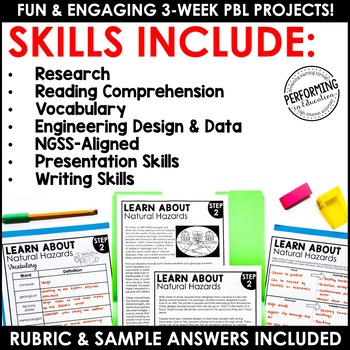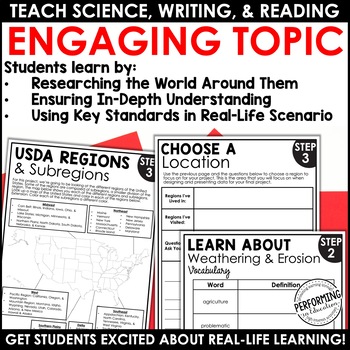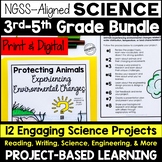4th Grade NGSS Project-Based Science | Science PBL | Natural Hazards, Energy
What educators are saying
Products in this Bundle (4)
Also included in
- This is a bundle of 12 PBL science units for 3rd-5th grade. These 3-week project-based learning (science-focused) research-based units are the perfect way to teach reading, writing, research skills, and science in one engaging, real-world unit. Your students will use key standards, such as research,Price $58.80Original Price $84.00Save $25.20
Description
This is a bundle of PBL science units for 4th grade. These project-based learning (science-focused) research-based units are the perfect way to teach reading, writing, research skills, and science in one engaging, real-world unit. Your students will use key standards, such as research, reading comprehension, and engineering design in a real-life scenario. The best part about PBL is that student choice and differentiation are built in!
4th Grade Driving Questions:
- How can I design a solution that will reduce the impact of natural hazards such as earthquakes, floods, tsunamis, or volcanic eruptions on humans?
- How can I communicate information on the effects of weathering and the rate of erosion with people in the community?
- How can I design an experiment for my class to test a device that converts energy from one form to another?
- How can we create models of plant and animal structures to help young children learn about how various organisms function?
Banish those boring worksheets and get your students excited about real-life learning! These projects cover the following skills:
- Research
- Reading Comprehension
- Collaboration
- Communication
- Writing
- Design & Creativity
- Critical Thinking
- Engineering Design Process
- Data Displays
- Scientific Method
Included in this Resource:
- Lesson Outline
- Sample Pacing
- Teacher Guide with Lesson Plans
- Scaffolded Research Notes
- Engineering Design Process Overview
- Rubric & Sample Answers
Plus, a BONUS digital version is included as well!
NGSS Standards Covered:
- NGSS-4-ESS2-1
Make obervations and/or measurements to provide evidence of the effects of weathering or the rate of erosion by water, ice, wind, or vegetation. - NGSS3-5-ETS1-1
Define a simple design problem reflecting a need or a want that includes specified criteria for success and constraints on materials, time, or cost. - NGSS3-5-ETS1-2
Generate and compare multiple possible solutions to a problem based on how well each is likely to meet the criteria and constraints of the problem. - NGSS4-ESS3-2
Generate and compare multiple solutions to reduce the impacts of natural Earth processes on humans. A variety of hazards result from natural processes (e.g., earthquakes, tsunamis, volcanic eruptions). Humans cannot eliminate the hazards but can take steps to reduce their impacts. - NGSS.4-PS3-2: Make observations to provide evidence that energy can be transferred from place to place by sound, light, heat, and electric currents.
- NGSS.4-PS3-4: Apply scientific ideas to design, test, and refine a device that converts energy from one form to another.
- NGSS. 4-LS1-1: Construct an argument that plants and animals have internal and external structures that function to support survival, growth, behavior, and reproduction.
***************************************************************************
Customer Tips:
How to get TPT credit to use on future purchases:
• Please go to your My Purchases page after you log in. Beside each purchase see a Provide Feedback button. Simply click it and you will be taken to a page where you can give a rating and leave a comment for the product. Each time you give feedback, TPT gives you feedback credits that you use to lower the cost of your future purchases. I value your feedback greatly as it helps me determine which products are most valuable for your classroom so I can create more for you.
Be the first to know about my new discounts, freebies and products:
• Click here to follow my store.
*****************************************************************************






